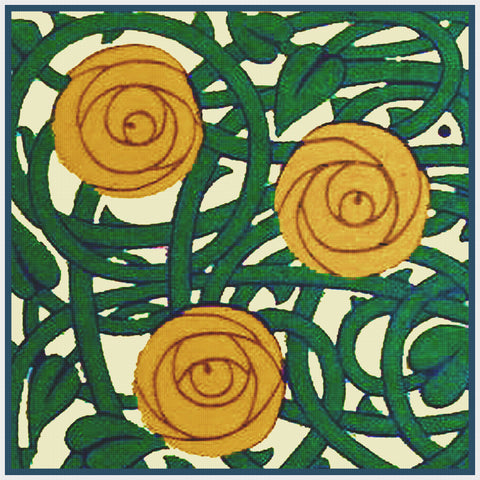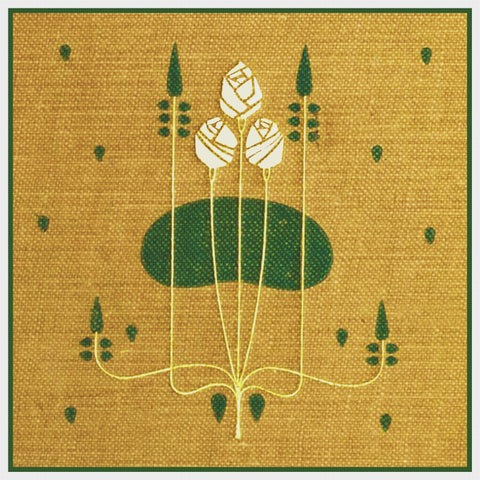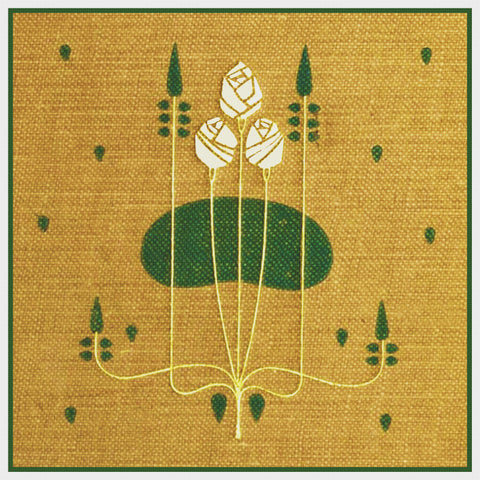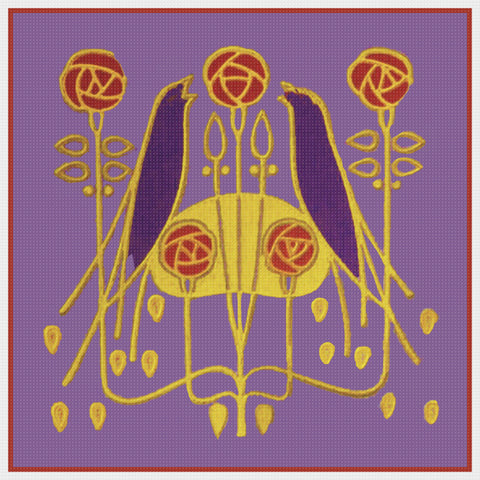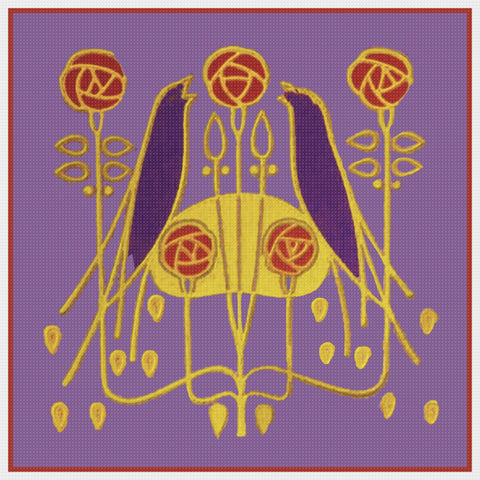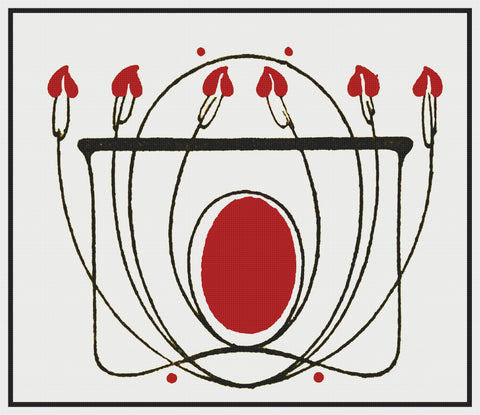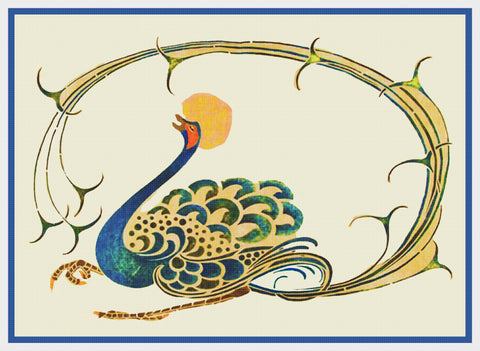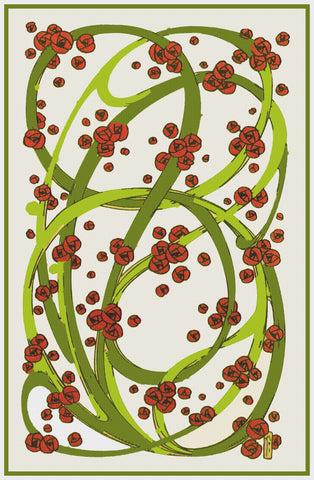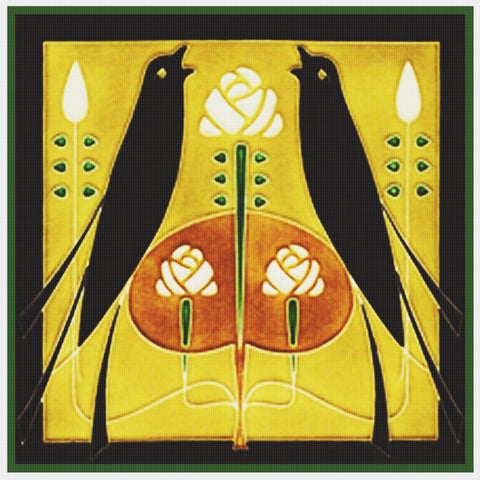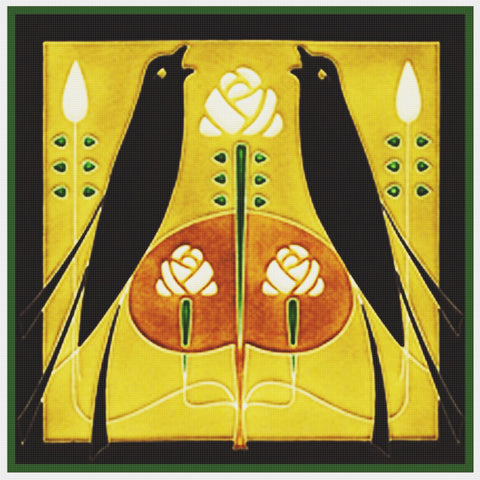- Orenco Originals creates exceptional charts/patterns. NO thread or fabric are included.
- COUNTED CROSS STITCH PATTERN Charted for 14 count fabric and DMC Cotton Floss. Finished size is 14 inches (196 Stitches) by 12 inches (168 Stitches).
- Chart/Patterns use up to 2 DMC colors of floss. Full stitches only. No half stitches and no backstitching necessary.
- We provide two charts both printed in black ink on bright white 11" by 17" paper. Chart #1 is a single page chart. Chart #2 (tired eyes) is a 4 page enlarged chart that eases eye strain.
This is a pattern that is used to sew and to create a cross stitch picture.
This is NOT a completed product. It is NOT a kit, it contains no floss or fabric.
This chart was inspired by the art of Talwin Morris who was Born in 1865 in Winchester, England, Morris moved to Glasgow in 1893 to become the Art Director for the publisher Blackie & Son. As of 1898, he was also designing books for Blackie & Son's subsidiary, Gresham Publishing. Morris befriended Charles Rennie Mackintosh and other artists of the Glasgow Style, a particularly Scottish expression of Art Nouveau. In fact, one of Mackintosh's better known buildings, Hill House, designed for Walter Blackie, shows a large Talwin Morris' influence. He introduced Mackintosh to Walter Blackie and championed his work. Morris also commissioned book designs from Mackintosh and from a number of other artists in the Glasgow Style circle. His designs also reflected many of the stylistic forms and symbols found in the others' works. Those forms draw on natural shapes such as roses, stems and feathers but Morris also used linear and architectural motifs in his designs. Blackie & Son sold popular books, including children's books, school texts, theological and philosophical works, popular novels, and poetry. They also published science texts, dictionaries, and encyclopedias. Gresham Publishing also sold popular material in addition to reference texts and manuals. The books aimed for general readership and both publishers were important suppliers to book purchasers in Great Britain. Morris worked during a very dynamic period of book design. Bookbinding technology permitted increasingly elaborate and colorful designs, and Morris took advantage of the possibilities as they developed. His later designs incorporate different colors and bolder shapes, reflecting improvements in binding craft. Talwin Morris worked as a book designer from 1893 to 1911, the year of his death.


![[product_title] - Orenco Originals LLC Counted Cross Stitch](http://www.orencooriginals.net/cdn/shop/products/01a14x12TalwinMorrisArtNoveauHeartDesignSTITCHED_1024x1024.jpg?v=1599024780)
![[product_title] - Orenco Originals LLC Counted Cross Stitch](http://www.orencooriginals.net/cdn/shop/products/01a14x12TalwinMorrisArtNoveauHeartDesignSTITCHED_medium.jpg?v=1599024780)
![[product_title] - Orenco Originals LLC Counted Cross Stitch](http://www.orencooriginals.net/cdn/shop/products/AfterYouStitchMake_PillowsTalwinMorris_ce29cb45-3164-4993-95be-04446372a39f_medium.jpg?v=1599024780)
![[product_title] - Orenco Originals LLC Counted Cross Stitch](http://www.orencooriginals.net/cdn/shop/products/ChartExample_-_Copy_-_Copy_-_Copy_4_-_Copy_2d56a333-67ed-4a05-970a-1120a755c22b_medium.jpg?v=1599024780)
![[product_title] - Orenco Originals LLC Counted Cross Stitch](http://www.orencooriginals.net/cdn/shop/products/ChartExample_-_Copy_-_Copy_-_Copy_1_-_Copy_-_Copy_9b24706e-e628-4082-93c2-7c87eb4d34b9_medium.jpg?v=1599024780)
![[product_title] - Orenco Originals LLC Counted Cross Stitch](http://www.orencooriginals.net/cdn/shop/products/ChartExample_-_Copy_-_Copy_-_Copy_2_-_Copy_-_Copy_96f52df3-73ed-46e1-847b-a662353d46be_medium.jpg?v=1599024780)
![[product_title] - Orenco Originals LLC Counted Cross Stitch](http://www.orencooriginals.net/cdn/shop/products/AfterYouStitchFrameITalwinMorrisPeacock_1313cf1e-f218-4543-a20a-27cd5206973b_medium.jpg?v=1599024781)
